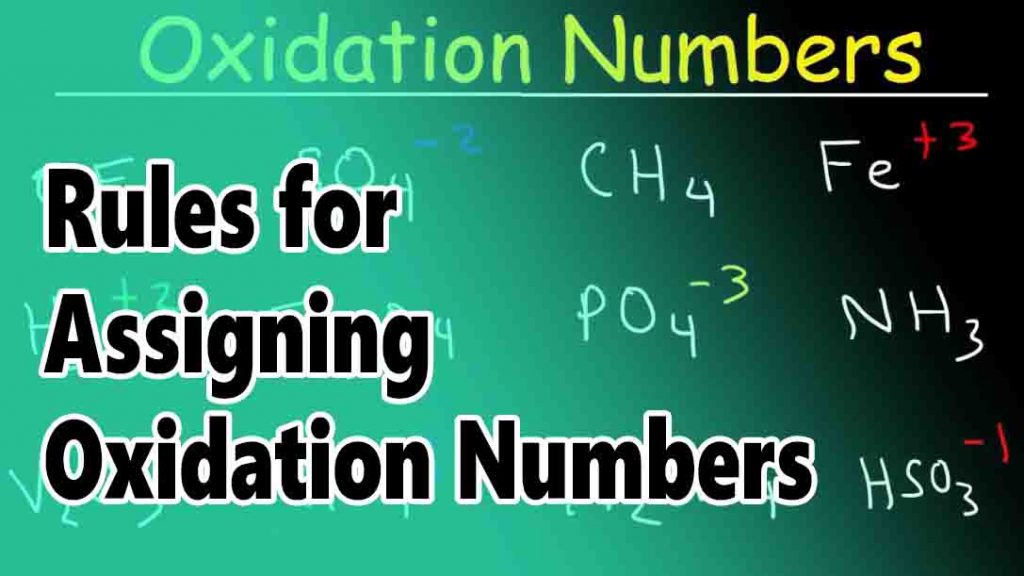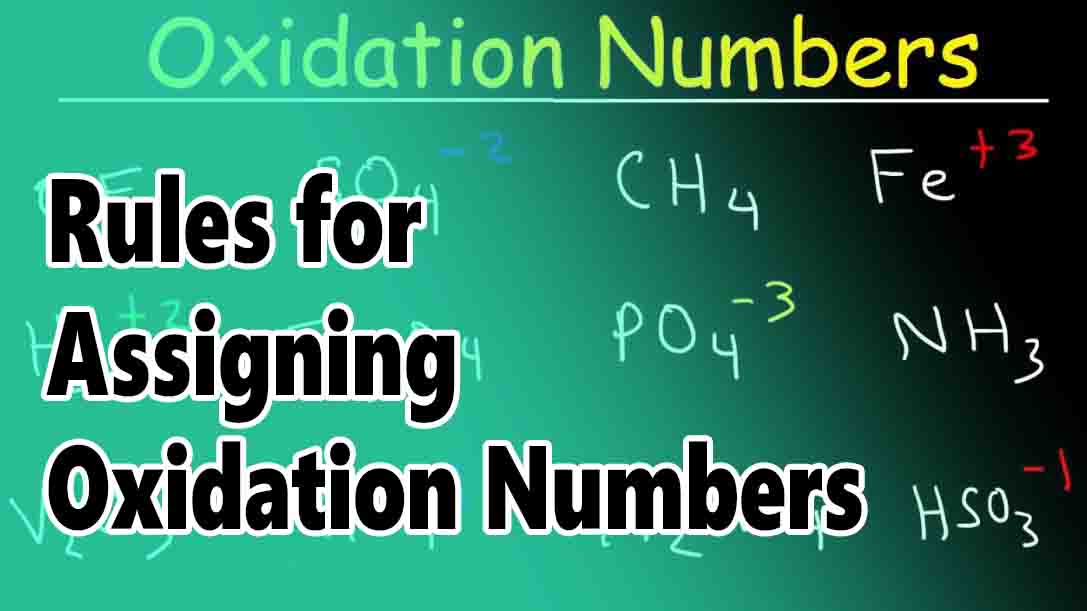The transfer of electrons is an electrochemical reaction. You should always know which atoms are oxidized and which atoms are reduced during a reaction. Oxidation numbers are used to keep track of how many electrons are lost or gained by each atom.
These oxidation numbers are assigned using the following rules.

Table of Contents
Rules for Assigning Oxidation Numbers
Rule 1: The first rule is to keep the sum of the oxidation numbers of all atoms that are being considered equal to zero. For example, a molecule made up of two hydrogen atoms and one oxygen atom would have the sum of its oxidation numbers equal to zero.
Rule 2: If one or more atoms are singly bonded to the elements iron, magnesium, calcium, or sulfur, add one to the oxidation number of the remaining unoxidized atoms.
Rule 3: Add 1 to the oxidation number of all atoms that are bonded in pairs with the elements iron, calcium, or sulfur.
For example, carbon atoms bonded in pairs with iron, calcium, or sulfur would have an oxidation number of + 4, + 8, or + 12, respectively.
Rule 4: Add 2 to the oxidation number of all the non-metal atoms (oxygen, nitrogen, and carbon) that are bonded in multiple with atoms of the same element.
For example, a group of five oxygen atoms bonded together would have an oxidation number of +18.
Rule 5: Add 4 to the oxidation number of all the atoms bonded in triplets with a single element.
The rules for assigning oxidation numbers can help you to understand electrochemical reactions.
FAQs
Oxidation number is the amount of electrons that are in the atom. Valence is how many positive charges are in the atom.
Oxidation numbers are used to determine which element in an atom is more likely to be found on the surface of an object.
We look at the elements that make up the atom and add the numbers together. The higher the number, the higher the likelihood of finding that element on the surface.
You can find this information on a periodic table.
Yes, you can use oxidation numbers to determine the type of bond between atoms.
No, the oxidation number does not tell you the charge of the atom.

